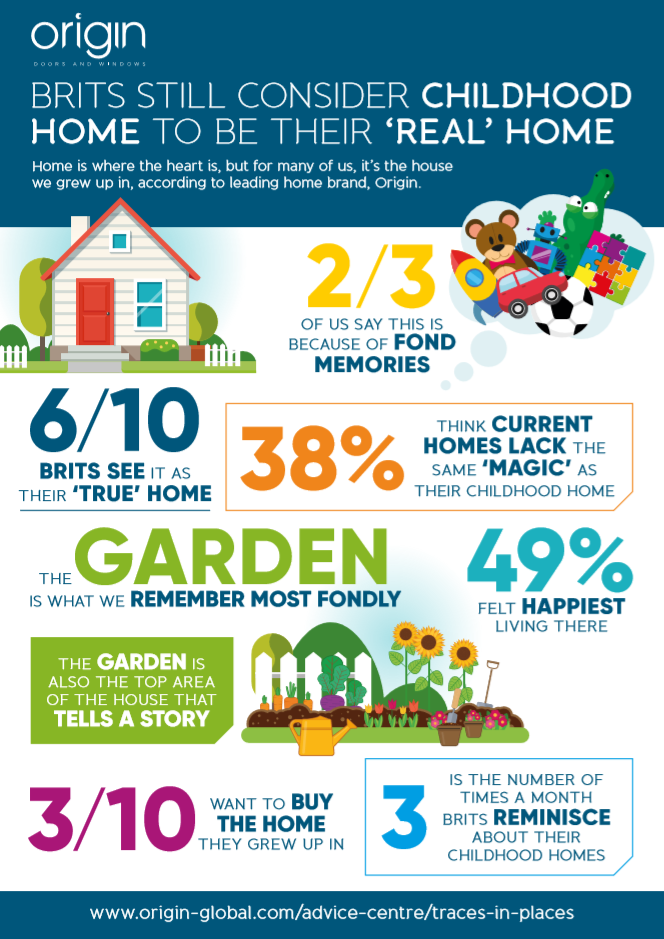Creating beautiful homes for our customers and their families is at the heart of what we do, so the question ‘what makes a house a home?’ is a common one. We were curious to find out more and our research unearthed some surprising, and heart-warming, findings.
It turns out that we have such deep affection for the homes we grew up in that most of us still consider them our ‘true home’ long after we move out and become property owners ourselves. A sentimental 49% of us said we felt happiest living in our childhood homes than at any other time in our lives.
Nostalgia
Nostalgia drives this sense of ‘home’ in relation to our childhood. It is the memories linked to the houses that makes them feel like home. Traces of family life, such as height markers on doorframes, the smell or photos on walls, and the stories they tell, are remembered fondly; they become ingrained in the notion of ‘home’ and we feel their absence in new houses we move to.
The childhood home is also where we spend most time together with family (important for 40% of us) or feel safe (important for 56%) which is why it still feels like the ‘real home’ for so many. It was a case of quality rather than quantity for Scottish respondents, with just 14% citing the ability to spend more time with their family this as the reason they hold their first home dear, the lowest in the country; 44% said it was because they had great times with their family there. By comparison, 57% of Welsh placed family time as an important factor in their affection for the home of their youth.
Given the heavy impact of nostalgia, it is perhaps no surprise that 38% of people we surveyed felt that their current home lacks the magic of their childhood home. Many of us are keen to recapture this magic by continuing home traditions from childhood into adulthood. A quarter of us wish we could incorporate certain aspects of beloved family homes into current houses, including family pets and favourite views. One in 10 have even replicated décor and furnishings in a bid to recreate the homes of their youth and three in 10 would go as far as to buy the property they grew up in if they could.
Memories
The garden provokes the fondest memories of where we grew up, with ‘the view’ and front door playing an important part – something we understand well. The garden is also where many important stories from family life are generated.
Childhood memories can be triggered by the smallest detail in a house, such as the sound of a gravel drive, the ring of a doorbell, sound of the front door, or the feel of a carpet. Some of the more unusual anecdotes include an orange teapot, eating sweets under the stairs and bannister rails painted in Sheffield United colours.
The impact of these is so significant that our research findings showed people think about events from their youth around three-times a month on average.
Interestingly the levels of fond memories we have of our childhood home varies by region. In Scotland just 31% of those surveyed had fonder memories of their childhood home than their current one, compared to Welsh respondents who topped the UK chart at 57% preferring the homes of their youth.
We’ve all heard the phrase ‘if these walls could talk’ and what our research tells us that our homes actually do tell a story if you look closely enough. Height markers, handprints and graffiti on walls and door frames, writing of names on garden paths, under wall paper and inside cupboards, chips and cracks in windows and walls, are all the traces of family life that tell stories for years to come.
What traces of your childhood remained in your family home after you left and what stories do you think your new home will tell in time? Join the conversation using #tracesinplaces.
To find out more about the homes we’ve helped create, browse our case studies.







































